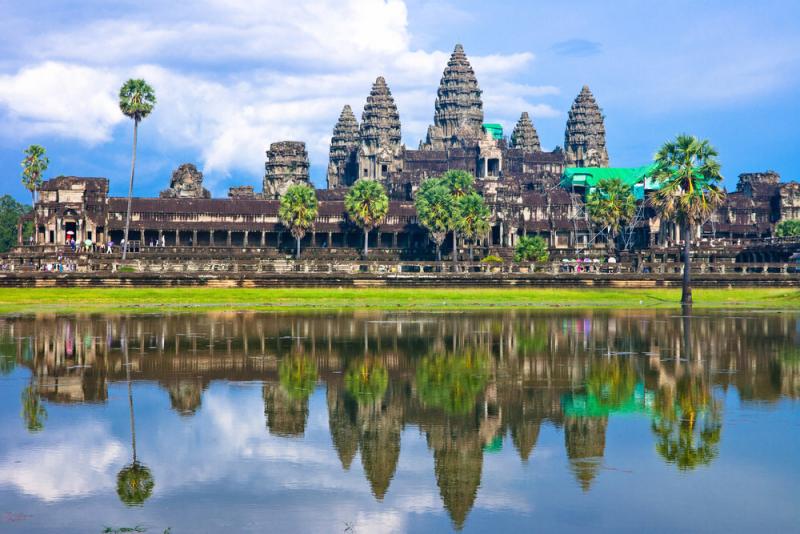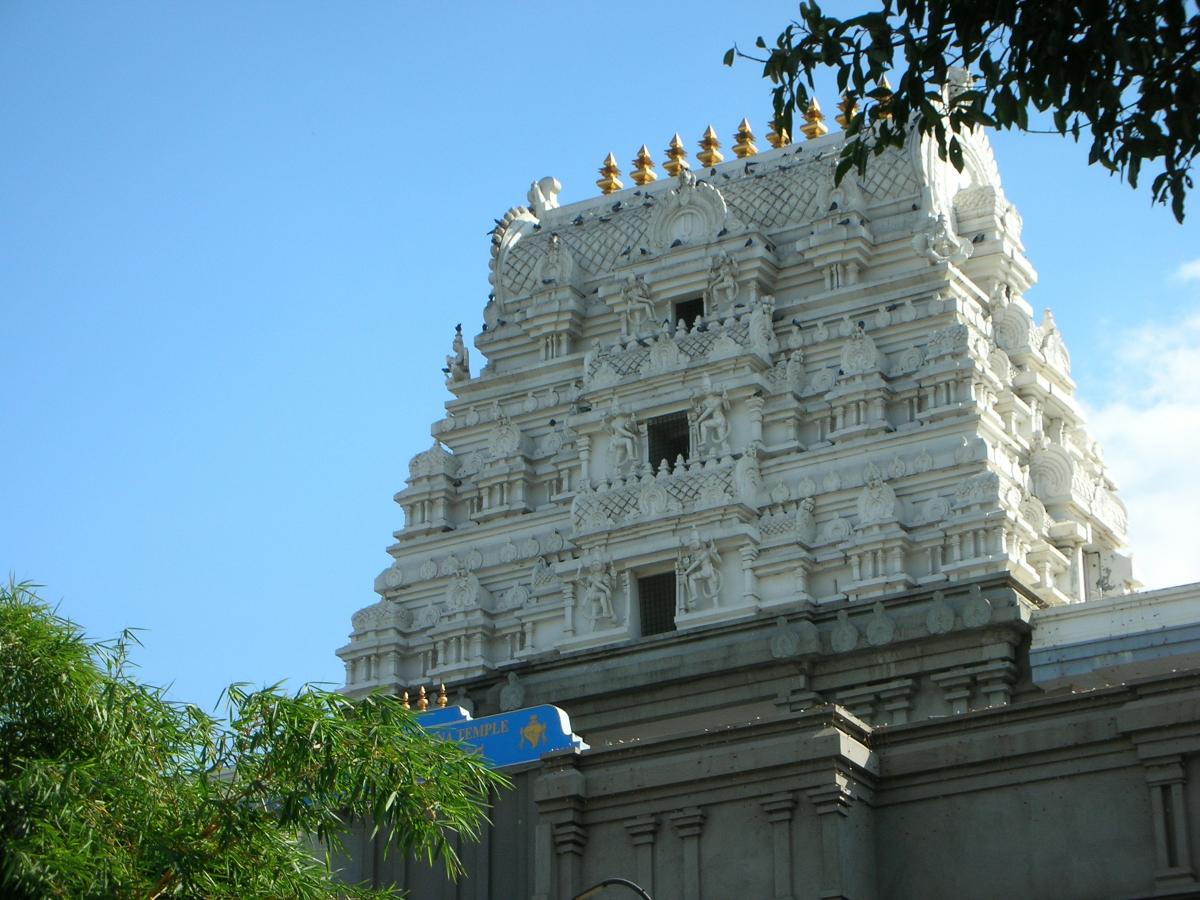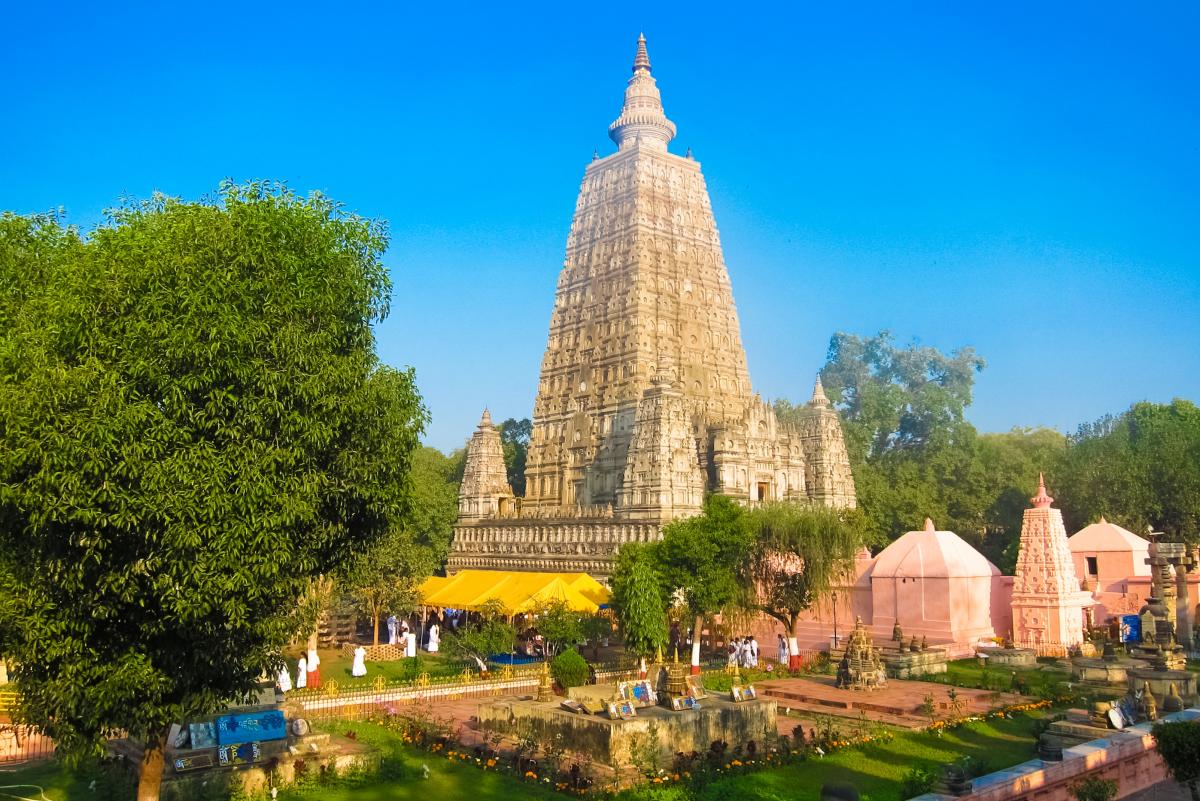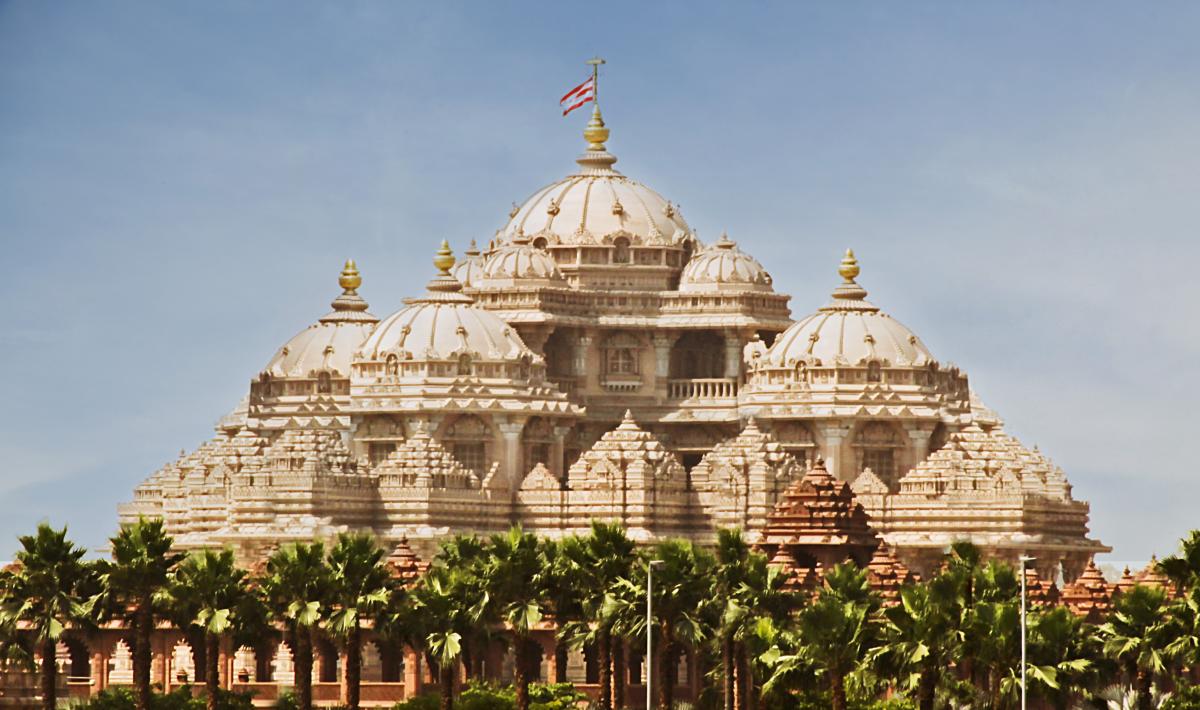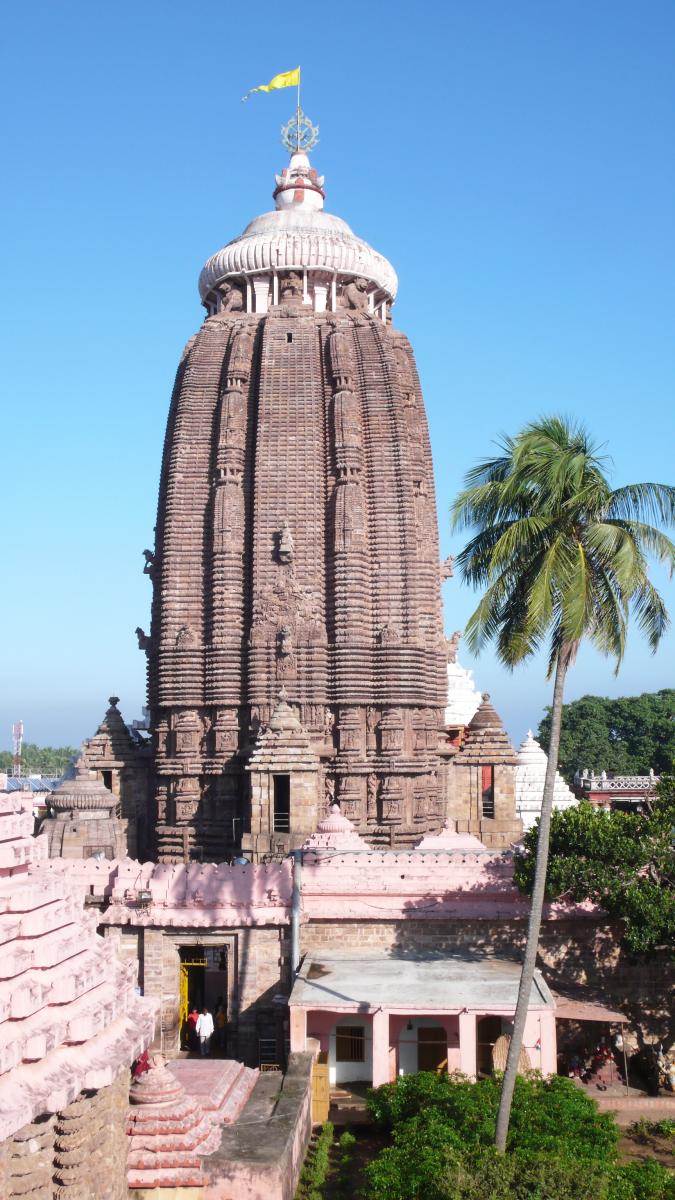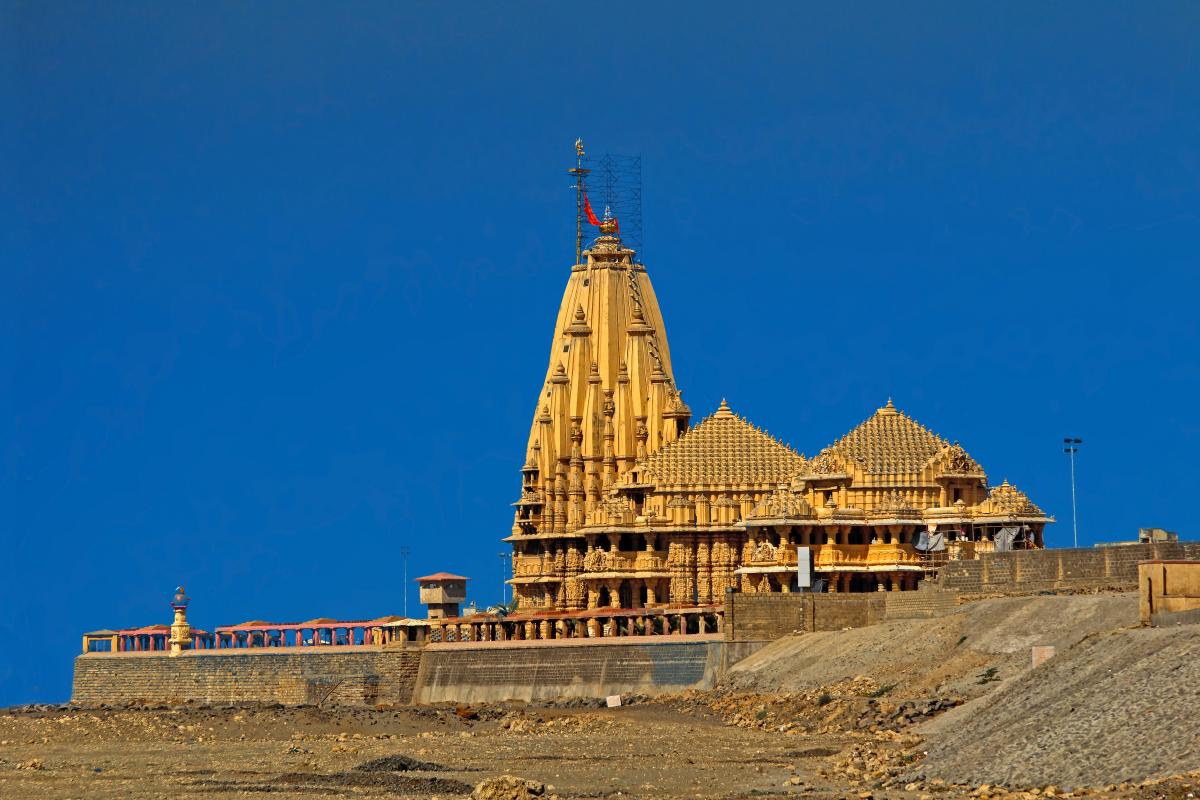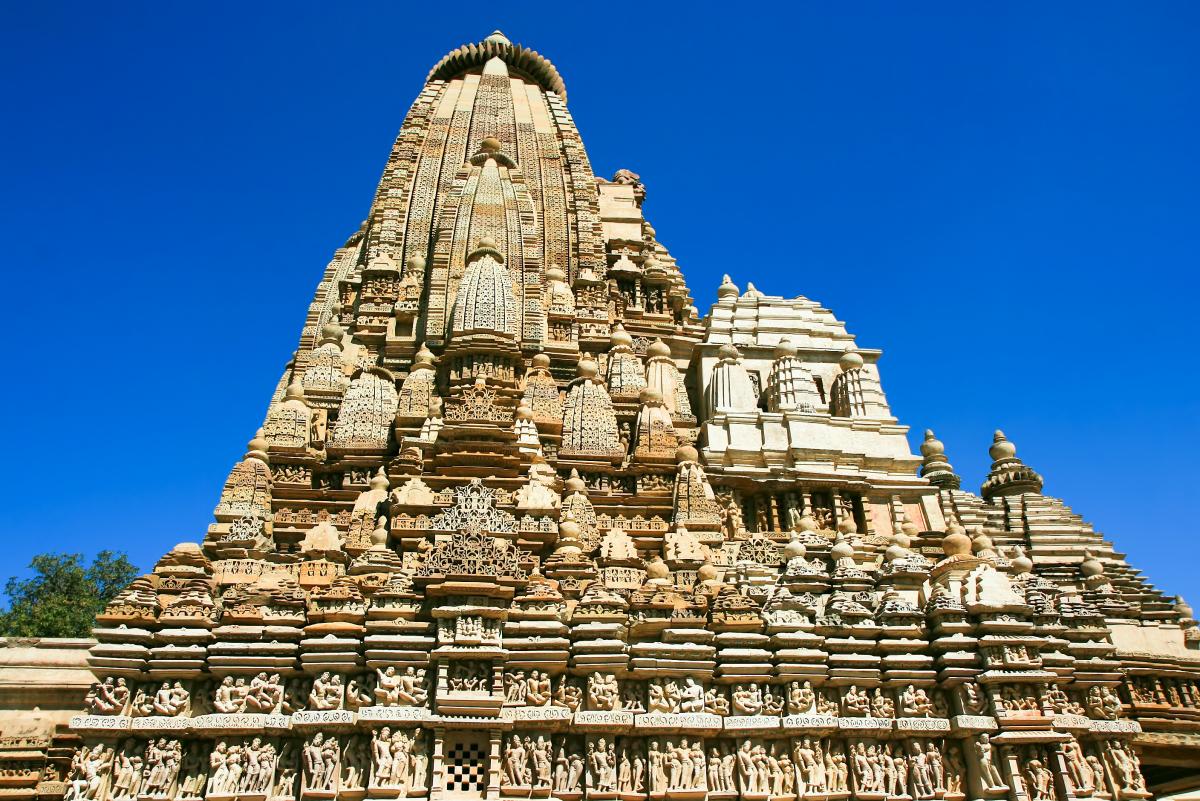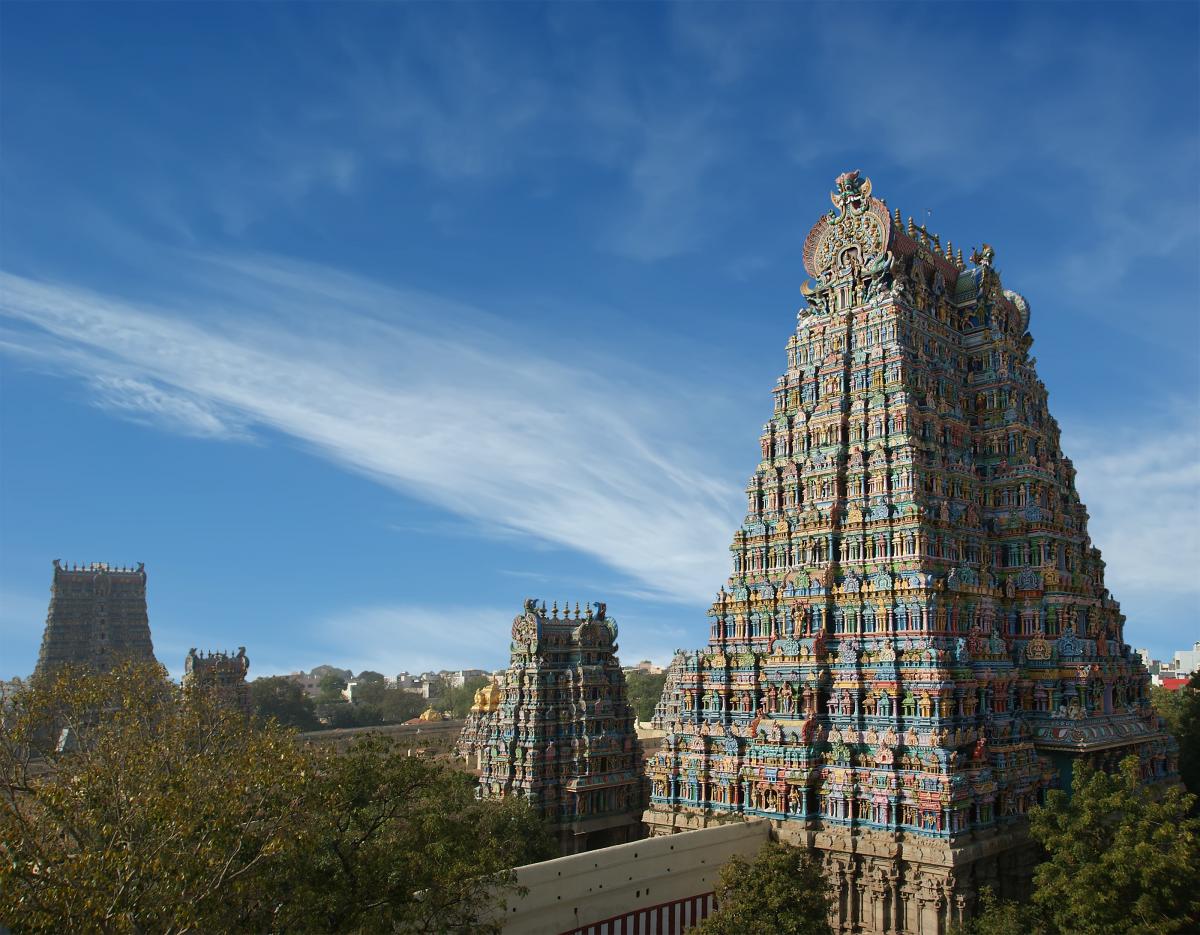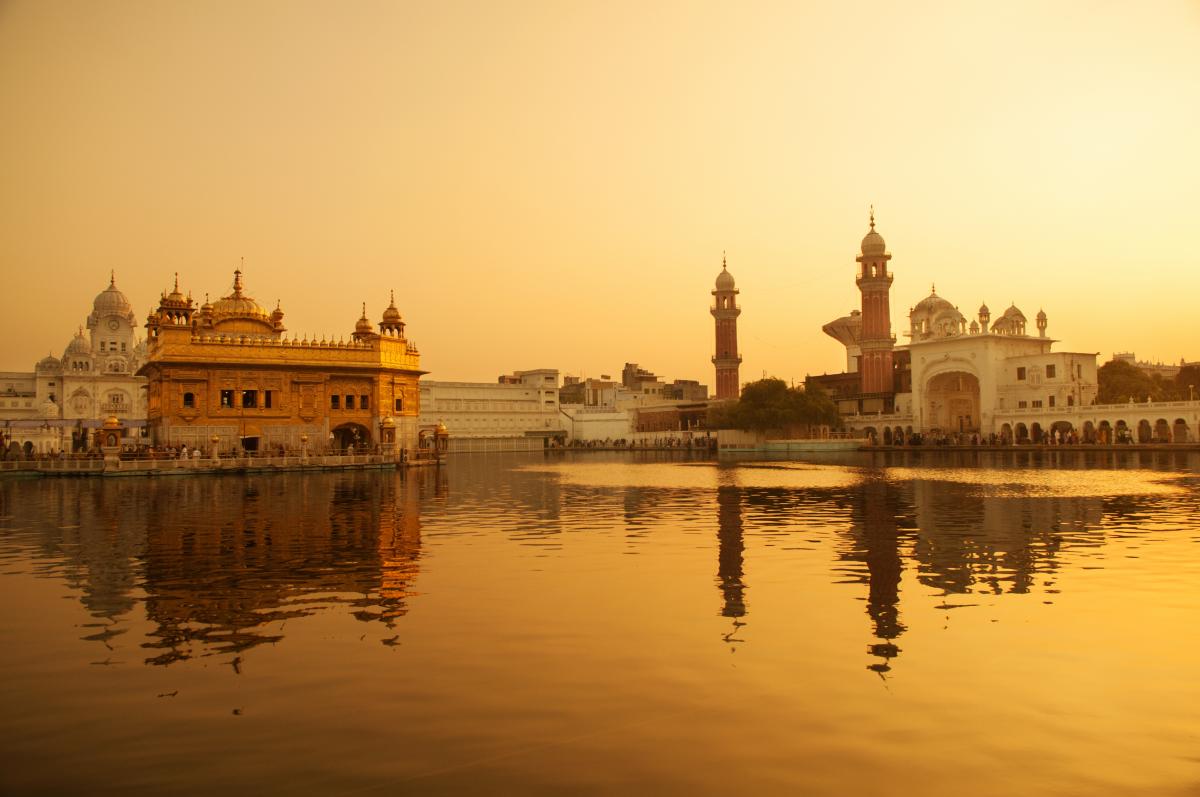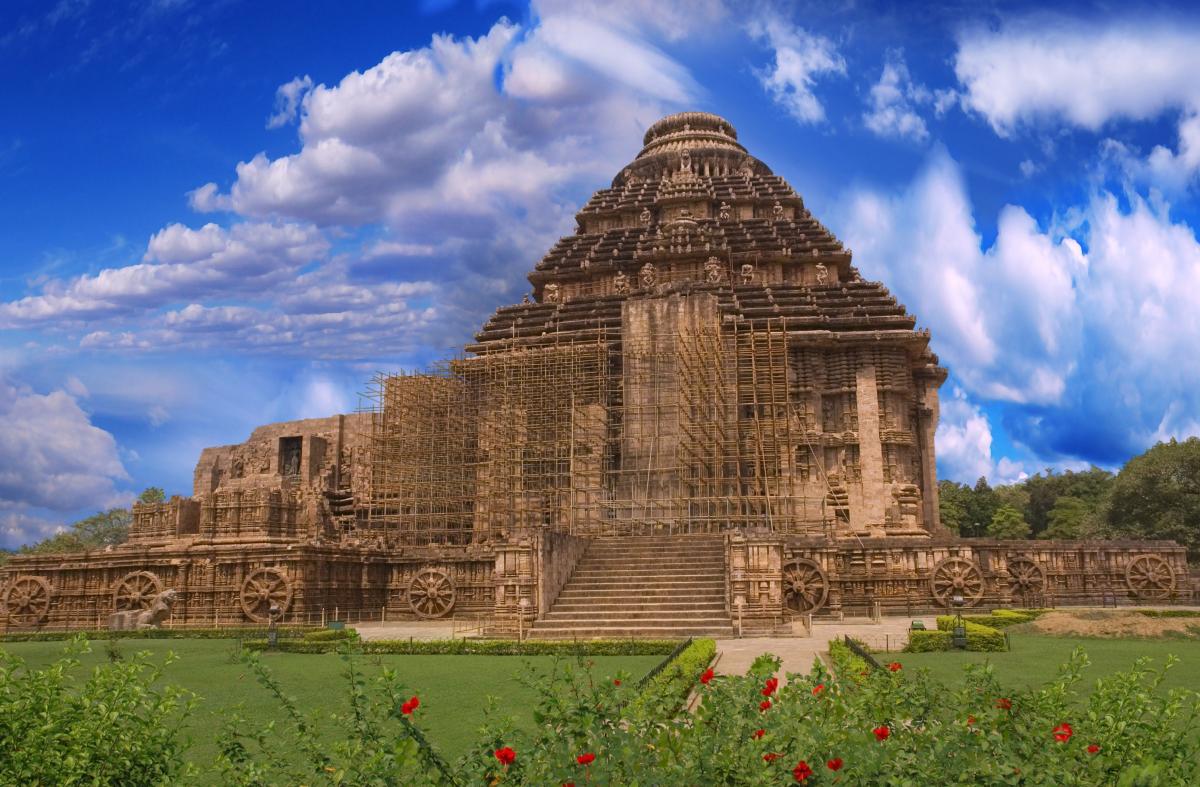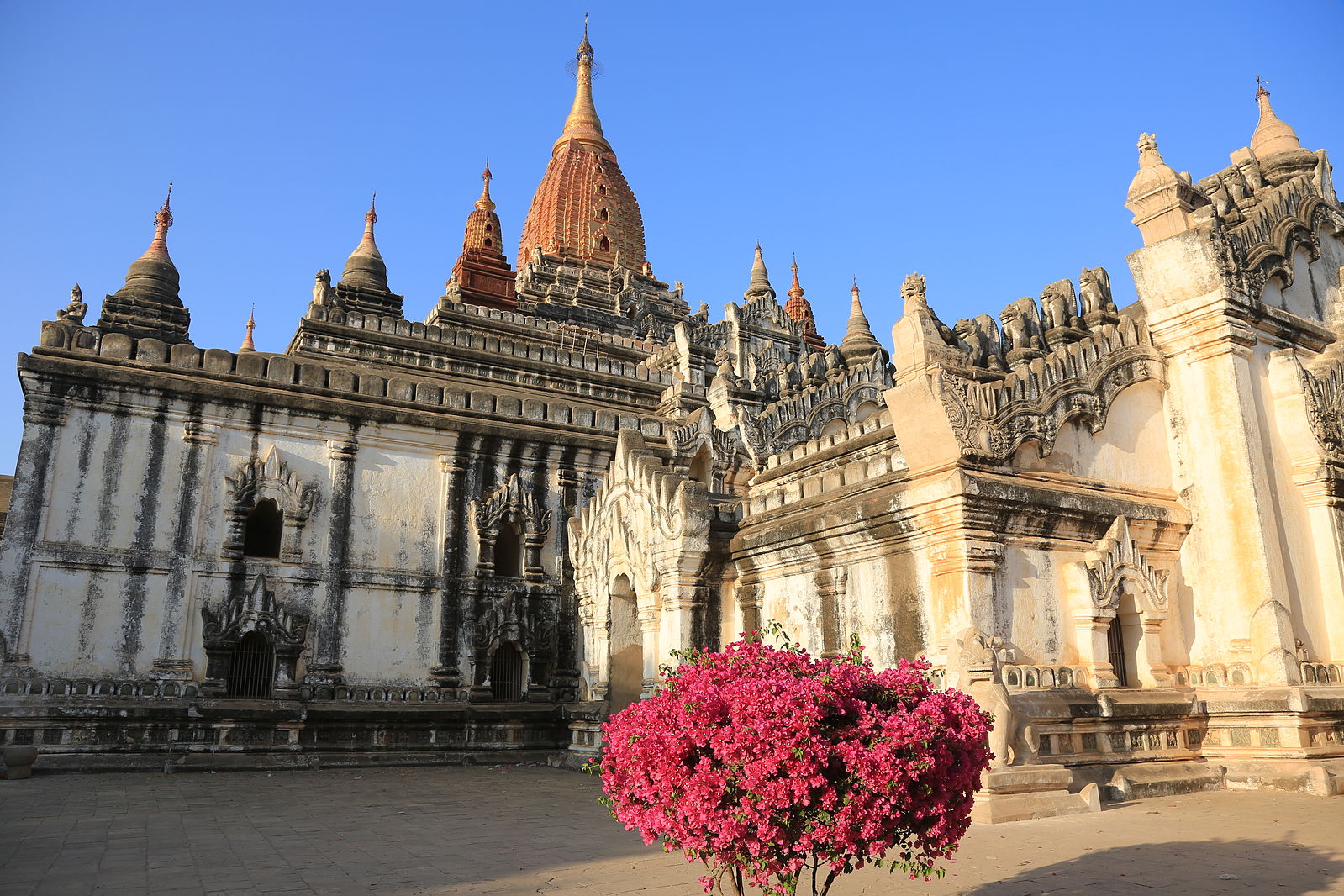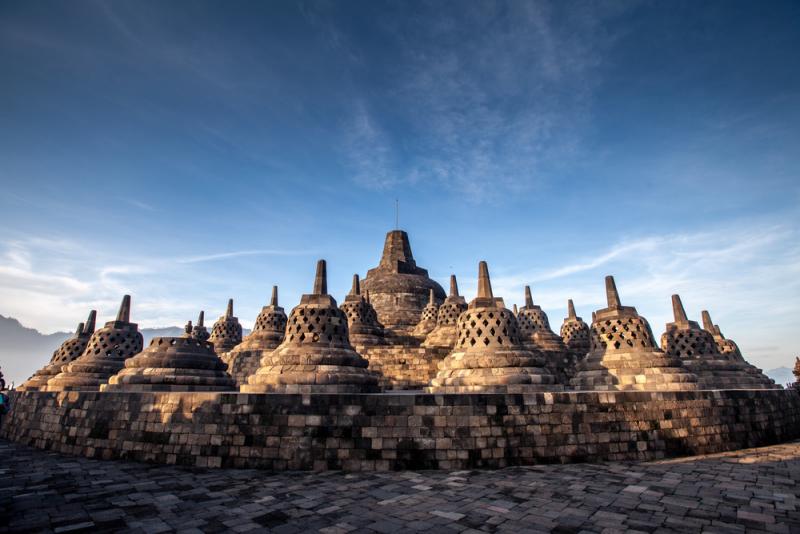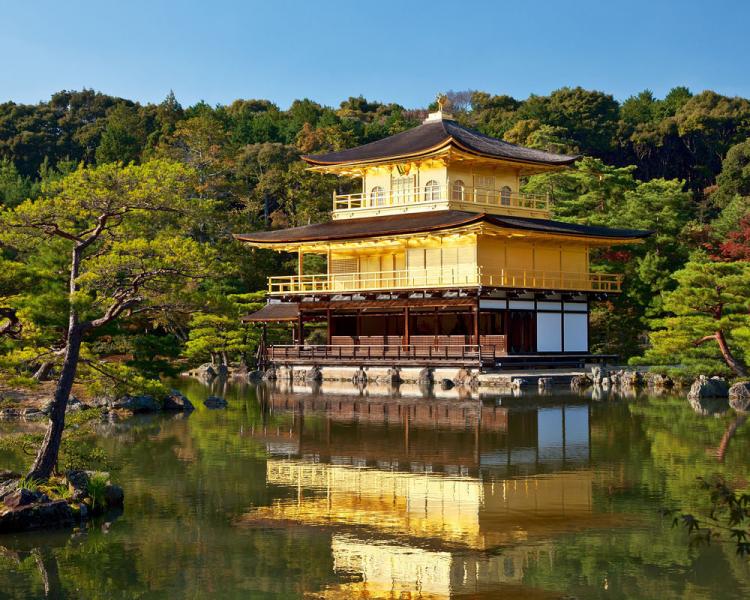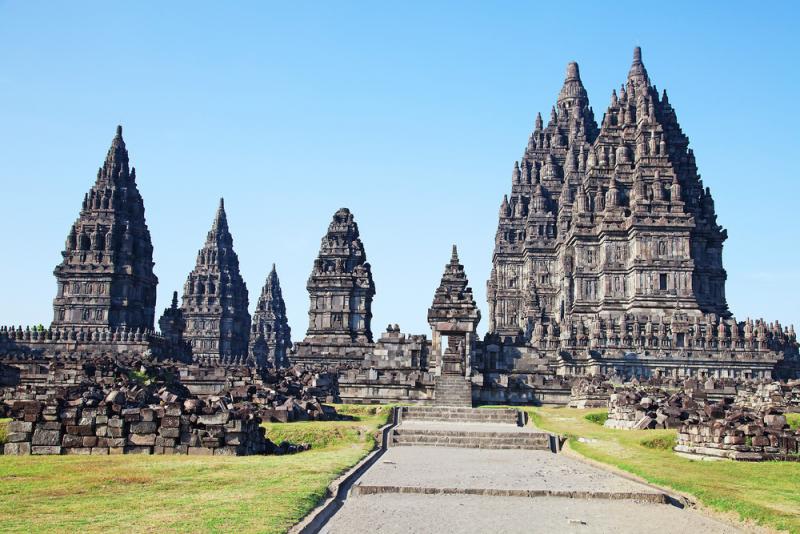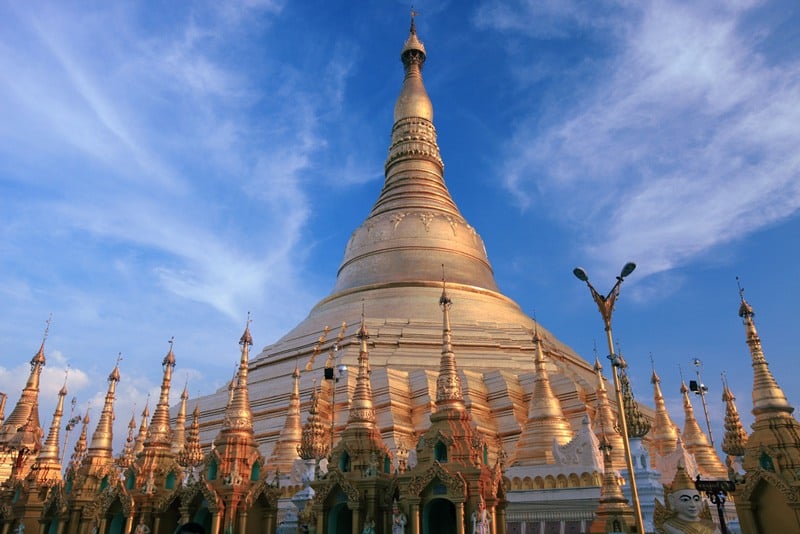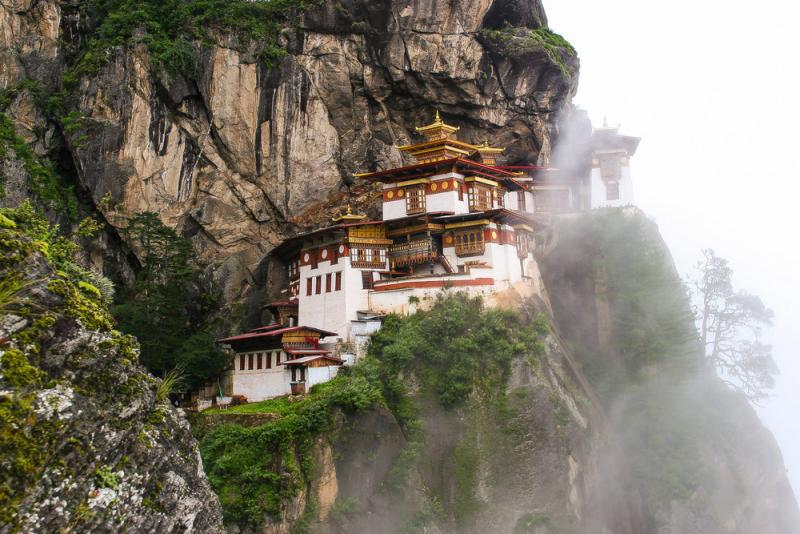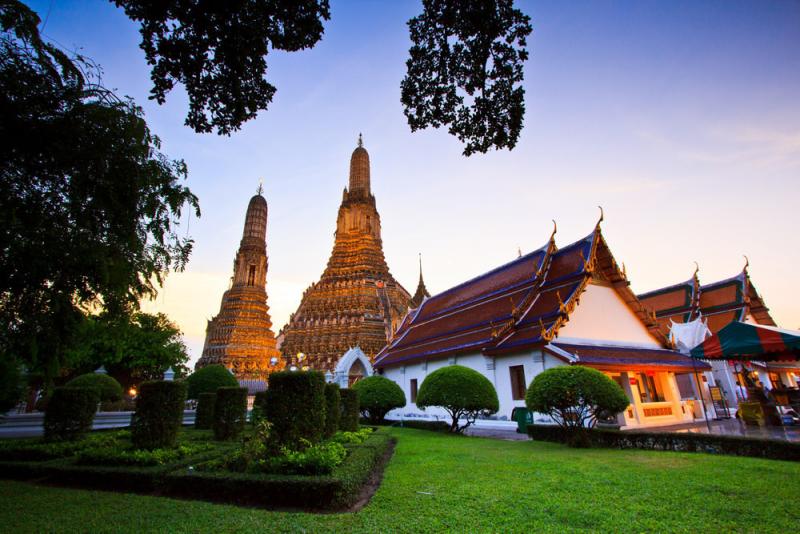From covered galleries, elevated towers and curved roofs to decorative sculptures, extensive bas-reliefs and hidden paintings, everything seems to come together perfectly for this architectural masterpiece. Gorgeous and grand, Angkor Wat is one of the most impressive structures you’ll ever come across.
2. Iskcon Temple, Bengaluru, Karnataka
Another comparatively recent temple on this list is the Iskcon Temple in Bengaluru. Built in 1997, it is dedicated to the Hindu gods Krishna and Radha. This is the largest Iskcon temple anywhere in the world. Bengaluru is a pleasant weather city throughout the year, but if you have to choose the best months, then book a flight to Bengaluru between October and February.
3. Mahabodhi Temple, Bodh Gaya, Bihar
Another Indian gem on the UNESCO World Heritage site list, the Maha Bodhi temple at Bodh Gaya is an ancient temple built by the Emperor Ashoka in the 3rd century B.C. Though restored a number of times, the present day structure has most of its original elements intact. The main attraction of the Maha Bodhi temple is the holy Bodhi tree on its western side. It is said to be a descendant of the original tree that the Buddha sat under.
4. Akshardham Temple, New Delhi
This pink sandstone and white marble complex, spread over 100 acres, is one of the most recent additions to the list of most amazing Indian temples. It was built in 2005, and takes inspiration from its namesake in Gujarat. It surpasses both in beauty and scale. With more than 20,000 statues from the Hindu pantheon of gods and goddesses, it is wise to plan out a whole day for the visit.
5. Jagannath Temple, Puri, Orissa
This massive 12th century temple complex is a group of 120 temples and shrines contained within huge walls. Famous for its annual Rath Yatra, which is attended by millions of pilgrims, this temple dedicated to Lord Jagannath is one of Hinduism’s top four religious destinations. When you take a look, observe that the image of Jagannath is made of wood, not metal or stone like most Hindu deities.
6. Somnath Temple, Gujarat
This marvelous piece of Asian history has been destroyed, sacked, and rebuilt multiple times over the past few centuries. It is the top tourist spot in Gujarat, having been constructed in 1947. When you visit, make sure to check out the Arrow Pillar on the sea protection wall. The pillar indicates a straight line over the water with no land between the shores of the temple and Antarctica.
7. Khajuraho Temple, Madhya Pradesh
This temple is part of the UNESCO World Heritage Sites, and is a Hindu and Jain temple. It is famous for the Nagara style of architecture and erotic sculptures that lie on the outer region of the temple. The interior part is more calm and serene than the outer part. Only a little remains of the huge complex that was built between the 10th and 12th century, but what remains behind can leave any person in awe.
8. Meenakshi Temple, Madurai, Tamil Nadu
This is another 16th century wonder. Brightly painted, and elaborately sculpted, Meenakshi Temple is dedicated to the Hindu goddess Parvati and her consort Lord Shiva. This particular Temple is a perfect example of Dravidian style architecture. Make sure to look at the carvings on the two gopurams.
9. Golden Temple, Amritsar, Punjab
This temple is ultimately the headquarters of sikh religion and is known as Harmandir Sahib. This 18th century gold plated structure is a remake of the 16th century structure once destroyed by Afghan forces. A symbol of Sikh faith, it is a combination of Hindu and Muslim architectural features. The best time to visit this temple is in the early morning and you should fly to Amritsar between October and March.
10. Sun Temple, Konark, Orissa
This is a 13th century temple dedicated to the Sun God. Essentially, this structure is Surya, The Sun God, being carried across the heavens in a chariot with 24 exquisite wheels, and drawn by seven magnificent horses. Make sure to look at the carvings done on the walls, as most viewers get so carried away by the unusual chariot that they overlook these images.
11. Ananda Temple, Bagan, Myanmar
The Ananda Temple located in Bagan, Myanmar is a Buddhist temple built in 1105 AD during the reign of King Kyanzittha of the Pagan Dynasty (1084–1113). It is one of four surviving temples in Bagan. The temple layout is in a cruciform with several terraces leading to a small pagoda at the top covered by an umbrella known as hti, which is the name of the umbrella or top ornament found in almost all pagodas in Myanmar.
12. Borobudur, Indonesia
Sitting atop a hill, Borobudur is famed both for its architecture and stonework. Adorning the walls and balustrades of this three-tier temple are bas-reliefs depicting the life of Buddha. There are 2,672 relief panels in all, plus more than 500 Buddha statues. Peer through the perforated stupas at the upper level and you can actually spot a Buddha figure in each one. What makes the whole structure even more remarkable? No cement or mortar was used in its construction!
13. Kinkakuji Temple, Japan
We don’t know what’s more remarkable: the fully gilded top floors of the Kinkakuji Temple or its shimmering golden reflection on the pond before it. Either way, this elegant structure is also notable for pulling off three different architectural styles. The first level, with its white plaster walls and natural wood pillars, is patterned after palaces of the Heian period. The second story is inspired by samurai residences. Topped with a golden phoenix, the uppermost section is reminiscent of Chinese Zen halls.
14. Prambanan Temple, Indonesia
The Prambanan Temple is actually a complex of more than 200 temples sitting on three concentric squares. Its focal point? The Shiva temple, which rises up to 47 meters! North of this is the Brahma temple and south, the Vishnu temple. If you want to learn about the epic story of Ramayana, keep an eye out for the outstanding reliefs carved across the temples. Also check out a few of the surrounding shrines.
15. Shwedagon Pagoda, Myanmar
What could be better than a temple gleaming in gold? One that’s studded with diamonds! And the sprawling Shwedagon Pagoda is a combination of both. Every inch of its main stupa is covered in gold, with the upper parts showcasing more than 2,000 carats of diamonds along with other precious stones like rubies and sapphires. See if you can spot the 76-carat diamond sitting at its highest tip. On the same platform as this stupa are shrines, sculptures and prayer halls.
16. Taktsang Dzong, Bhutan
Defying gravity is Taktsang Dzong (or Taktsang Monastery), a fortress set on the side of a granite cliff, just above clusters of blue pine and rhododendrons and with breathtaking views of the northern Palo valley. It actually also has a temple built inside a cave – believed to be the site where Guru Rinpoche landed when he introduced Buddhism to Bhutan. Legend has it that he rode on the back of a flying tiger, giving rise to the monastery’s name, which in English, translates to Tiger’s Nest. You can hike from the riverbed below to the temple in three to four hours. Or, if you don’t feel like walking, you can arrange for a pony ride.
17. Temple of Heaven, Beijing
The tranquil Temple of Heaven spans 267 hectares, making it the largest complex designed for sacrificial rituals to Heaven. That’s 92 ancient buildings housing 600 rooms, plus 4,000 ancient cypress trees! From its overall layout to the individual structures, the altar is designed to reflect the relationship between earth and Heaven. The notion that Heaven is round and the earth square, for instance, is depicted in the round temple halls with square bases and the semicircular and square forms of the northern and southern ends of the park, respectively. If you don’t have enough time to explore the grounds, just make sure you drop by the Hall of Prayer for Good Harvests and view its three-tiered marble terrace.
18. Wat Arun, Thailand
For the best of riverside temples, seek out the majestic Wat Arun. Here, the main attraction is the 82-meter-high spire (or tower), which you’ll get to appreciate even more the moment you lay eyes on its colorful, ornate floral mosaics. The mosaics feature bits of colorful Chinese porcelain and seashells arranged in intricate patterns. At the base of this tower, you’ll find a variety of soldier and animal sculptures. To get the most out of your visit, also make it a point to spend some time exploring the temple’s green granite pavilions and the richly decorated Ordination Hall.
